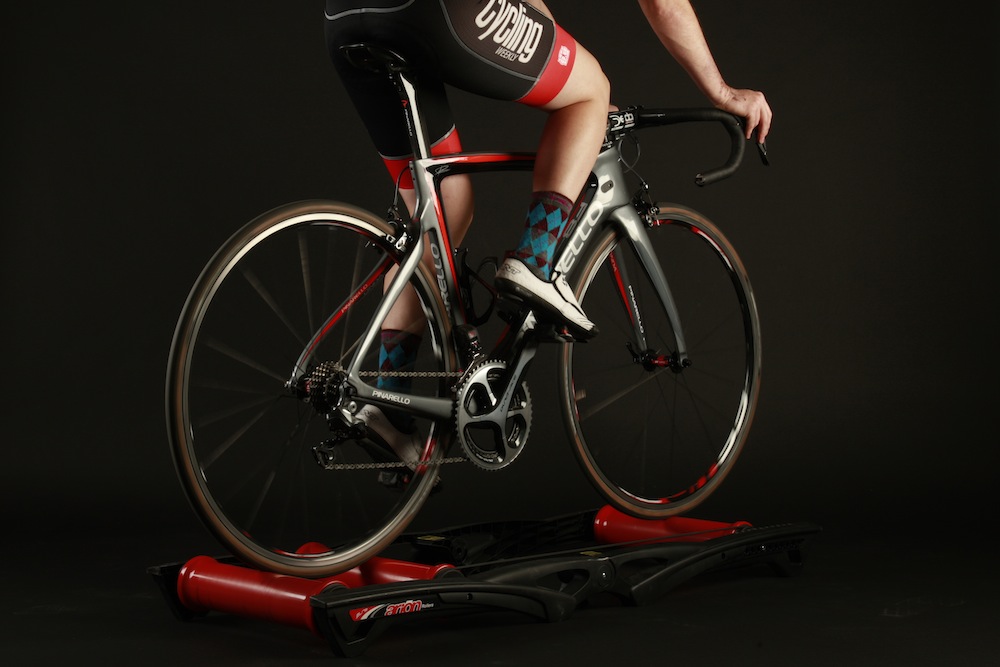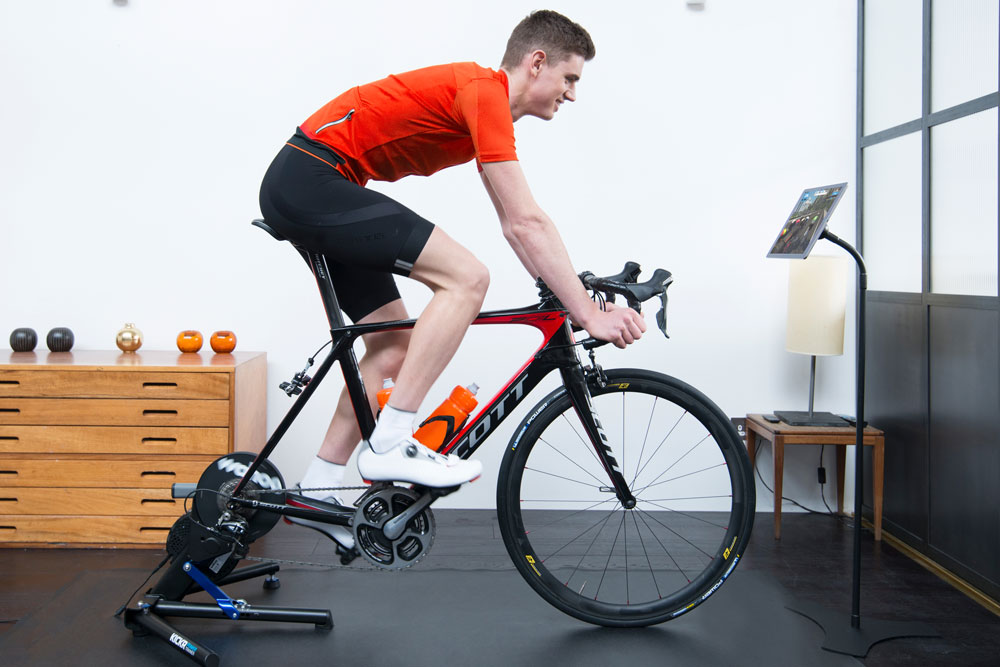Indoor trainers: what is electromagnetic resistance and can it make you fitter?
There's a huge range of options when it comes to choosing an indoor trainer, but what is the best technology for you?

David Bradford (Daniel Gould)

Indoor training is growing in popularity in cycling and with new technological developments the discipline is only expected to continue its upward trajectory.
There is now a huge range of software you can use to cycle inside, gain fitness and even stay social, while there is also an endless list of turbo trainer options.
The job of an indoor trainer is to replicate the forces that you push against when you’re riding outside. In basic terms these are wind drag, rolling resistance and drivetrain efficiency.
Let’s have a look at the five main methods of doing it:
Types of resistance

The time-honoured rollers have always been the purest way to train indoors, and to ride them requires skill and balance. However, because they supply a ‘natural’ resistance that’s linked to the diameters of the drums, it’s a basic type of workout that directly relies on how fast your rear wheel is spinning. That’s why they’re mostly used for warming up and warming down, especially by smooth-pedalling track riders who ride them no-handed with a serene insouciance.
Air resistance or fan-powered resistance – the original ‘turbo’ – also provides a progressive type of braking force, like the rollers with their friction. The faster the fan and connected flywheel turn, the harder it is to pedal. Air-resistance trainers are obviously the noisiest type and not ideal if you live in an apartment.
Get The Leadout Newsletter
The latest race content, interviews, features, reviews and expert buying guides, direct to your inbox!
Fluid trainers feel more realistic and smoother than the fan trainers with their impeller – a sort of internal propeller – that your rear wheel drives through a sealed casing filled with fluid. Again, the faster the wheel spins, the harder it gets, so you don’t have control over the resistance level. However, they are quiet and smooth.
Magnetic or ‘mag’ trainers work by creating resistance using a magnetic flywheel and magnets. Resistance can be adjusted manually, usually via a handlebar-mounted cable attached to the handlebar that moves the magnets closer or further away from the flywheel.
The most sophisticated type, which has replaced all the other types at the premium end of the indoor trainer market, is electromagnetic resistance, used in trainers like the Wattbike Atom. A magnetic field is created and controlled by electronics, meaning resistance can also be increased or reduced automatically by an app such as Zwift or TrainerRoad – hence ‘smart’ trainer.
Advantages of electromagnetic resistance

The biggest advantage of electromagnetic resistance over the other types is the speed of resistance change. Whereas a standard magnetic trainer, or even a more sophisticated smart trainer or smartbike that uses a motor to move its magnetics, will experience a lag while the magnetics physically move, an electromagnetic system changes the current to the magnet to change braking force instantly, meaning not only does the bike react faster to gradients in Zwift, but – in the case of a smartbike such as the Wattbike Atom – its own gear changes are crisp and fast.
This speed of resistance change also has a direct impact on ride feel, because it can be programmed to be very responsive. Realistic ride feel depends on how the system changes the load or resistance from an effort to recovery or how it goes about changing the gradient on a new segment of a mountain climb at the same time as you shift gears. The smoother, faster and more seamless it is, the more realistic the ride feel.
But can it make you fitter?
In the case of the Wattbike Atom, the electromagnetic resistance is particularly effective as a training tool in the Climbs feature in Wattbike’s Hub app. The gradient profile is preloaded in the ride and shows on the screen ride profile. The bike uses some of your user data, such as weight, to give a realistic pedalling weight and base resistance. The bike’s electronic ‘brain’ and resistance system are doing double duty. This allows you to tackle some of the most iconic hills and mountain stages around the world, from Box Hill to the beast of Pikes Peak in Colorado, USA.
For more specific training sessions, the speed of electromagnetic resistance allows more accurate HIIT workouts and standing starts thanks to its ability to change the resistance from zero, or a given level, to 100 per cent very quickly.
>>> 10 tips for improving your indoor winter workouts
And of course a super-accurate electromagnetic resistance system enables advanced training data such as Pedalling Effectiveness Score, a unique measurement in the Wattbike Hub app to improve your pedalling in real time.
Ultimately you’re the only person who can make you fitter, but a smartbike or smart trainer with electromagnetic resistance will give you all the tools you need to take your cycling to the next level.
Cycling Weekly created this content as part of a paid partnership with Wattbike. The contents of this article are entirely independent and solely reflect the editorial opinion of Cycling Weekly.

Thank you for reading 20 articles this month* Join now for unlimited access
Enjoy your first month for just £1 / $1 / €1
*Read 5 free articles per month without a subscription

Join now for unlimited access
Try first month for just £1 / $1 / €1
Simon Smythe is a hugely experienced cycling tech writer, who has been writing for Cycling Weekly since 2003. Until recently he was our senior tech writer. In his cycling career Simon has mostly focused on time trialling with a national medal, a few open wins and his club's 30-mile record in his palmares. These days he spends most of his time testing road bikes, or on a tandem doing the school run with his younger son.
-
 A bike rack with an app? Wahoo’s latest, and a hub silencer – Sea Otter Classic tech highlights, Part 2
A bike rack with an app? Wahoo’s latest, and a hub silencer – Sea Otter Classic tech highlights, Part 2A few standout pieces of gear from North America's biggest bike gathering
By Anne-Marije Rook
-
 Cycling's riders need more protection from mindless 'fans' at races to avoid another Mathieu van der Poel Paris-Roubaix bottle incident
Cycling's riders need more protection from mindless 'fans' at races to avoid another Mathieu van der Poel Paris-Roubaix bottle incidentCycling's authorities must do everything within their power to prevent spectators from assaulting riders
By Tom Thewlis